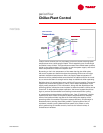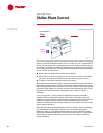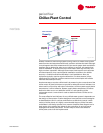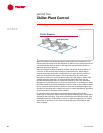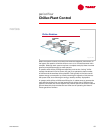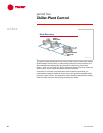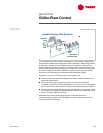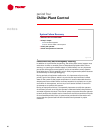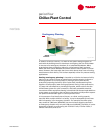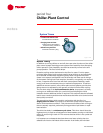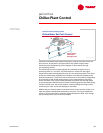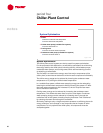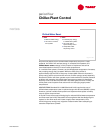
TRG-TRC016-EN 91
period four
Chiller-Plant Control
notes
In addition to failure recovery, it is wise for the system design engineer to
work with the building owner to develop a contingency plan for chilled water
in the case of an emergency shutdown or an extended breakdown. Many
organizations have contingency plans for critical areas of their business.
Some deal with natural disasters and others with the loss of power in critical
areas. However, few have taken the time to think about what a loss of cooling
would mean to their facility. This is often especially critical for process-cooling
applications.
Cooling contingency planning is intended to minimize the losses a facility
may incur as a result of a total or partial loss of cooling capacity. It allows a
building operator to act more quickly by having a plan in place and by
proactively preparing the facility. Such a plan often includes working with
suppliers to temporarily lease cooling equipment. During initial construction,
it is easy and cost-effective to provide piping stubs, which are built into the
chilled-water system for quick connection, and easily accessible electrical
connections. When equipment leasing is combined with these simple additions
to the system, a contingency plan can be put into action quickly and the system
can produce chilled water again in a short period of time.
It is important to first identify the minimum, or critical, cooling capacity
required. With multiple chillers in a facility, it may be acceptable to have less
than full capacity in an emergency situation. For example, the chiller plant
may consist of 1,800 tons [6,330 kW], but the minimum capacity required in
an emergency situation may only be 1,200 tons [4,220 kW]. Therefore, it is also
important to identify a contingency plan if Chiller 1 fails, if Chiller 2 fails, if
Chillers 2 and 3 fail, and so on.
Contingency Planning
electrical
electrical
connections
connections
piping
piping
stubouts
stubouts
Figure 99



